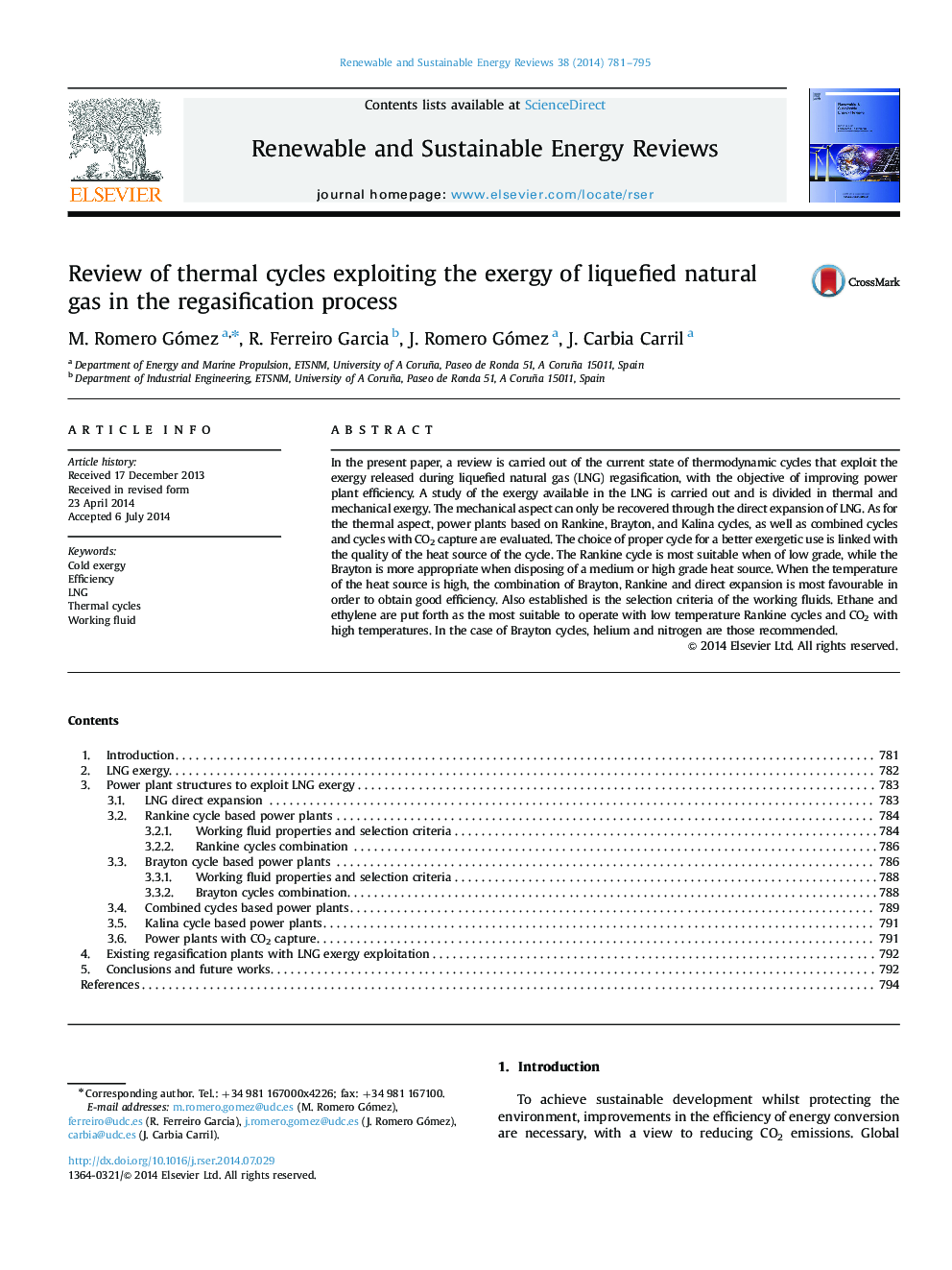| Article ID | Journal | Published Year | Pages | File Type |
|---|---|---|---|---|
| 8119852 | Renewable and Sustainable Energy Reviews | 2014 | 15 Pages |
Abstract
In the present paper, a review is carried out of the current state of thermodynamic cycles that exploit the exergy released during liquefied natural gas (LNG) regasification, with the objective of improving power plant efficiency. A study of the exergy available in the LNG is carried out and is divided in thermal and mechanical exergy. The mechanical aspect can only be recovered through the direct expansion of LNG. As for the thermal aspect, power plants based on Rankine, Brayton, and Kalina cycles, as well as combined cycles and cycles with CO2 capture are evaluated. The choice of proper cycle for a better exergetic use is linked with the quality of the heat source of the cycle. The Rankine cycle is most suitable when of low grade, while the Brayton is more appropriate when disposing of a medium or high grade heat source. When the temperature of the heat source is high, the combination of Brayton, Rankine and direct expansion is most favourable in order to obtain good efficiency. Also established is the selection criteria of the working fluids. Ethane and ethylene are put forth as the most suitable to operate with low temperature Rankine cycles and CO2 with high temperatures. In the case of Brayton cycles, helium and nitrogen are those recommended.
Related Topics
Physical Sciences and Engineering
Energy
Renewable Energy, Sustainability and the Environment
Authors
M. Romero Gómez, R. Ferreiro Garcia, J. Romero Gómez, J. Carbia Carril,
